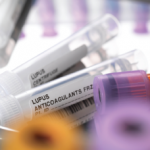
kentoh/shutterstock.com
CHICAGO—A lupus expert recently issued a call for action to improve outcomes of lupus clinical trials, a field that has had so many failed potential therapies that he said it seems to be “cursed.”
Richard Furie, MD, chief of rheumatology at Northwell Health in New York, said at the ACR’s 2016 State-of-the-Art Clinical Symposium that the field has had “just three wins, and I can’t tell you how many losses.”
The three achievements he counted are the BLISS-52 and BLISS-76 (Belimumab in Subjects with Systemic Lupus Erythematosus) trials, which led to the approval of belimumab, and the maintenance phase of ALMS (Aspreva Lupus Management Study), which found that mycophenolate mofetil was superior to azathioprine for lupus nephritis (LN) maintenance therapy.1,2
He did acknowledge that another highlight has been the revival of hydrochloroquine, which had previously been administered primarily to lupus patients with arthritis or rash, but has been found to have benefits in a lot of different domains, including lowering lipid levels, preventing thrombosis, preventing flares and improving survival. It is now considered essential for any lupus patient.
But the response rates in SLE and LN clinical trials with the available drugs have generally been quite low—ranging from 16–43% in SLE and from the single digits to 30% in LN.
“There are major unmet needs,” Dr. Furie said. “I think the biggest need is actually in lupus nephritis, but severe extra-renal lupus also needs to be targeted in order to reduce damage from the disease, as well as from the background therapies.”
He reviewed the failures and promises in a variety of approaches in the treatment of SLE and LN:
DNA/RNA/Toll-Like Receptors

Dr. Furie
Among the failed therapies in lupus include an attempt 15 years ago to “chew up the apoptotic garbage” seen in the disease. The idea was that if one can reduce the amount of circulating DNA released from apoptotic cells, one could prevent the inflammatory cascade that leads to disease. But that didn’t get past Phase 1. An effort to resurrect this idea, but targeting RNA, is now underway.
Another failed effort was a small study on toll-like receptors that also didn’t get past Phase 1, although Dr. Furie said there’s more to be done with this approach.
Interferon
One of the more promising strategies, he said, is to disrupt the effects of type I interferons, which are elevated in lupus patients. In fact, about 75% of lupus patients have interferon gene signatures, which could become a useful biomarker, Dr. Furie said.



